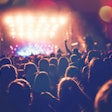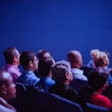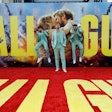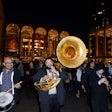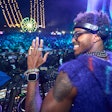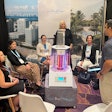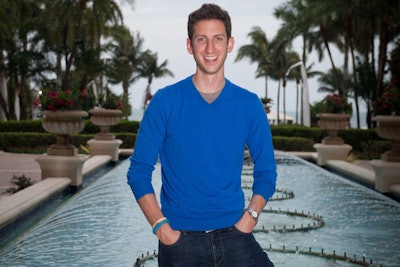
As C.E.O. of Bisnow Media, Ryan Begelman leads an organization that produces 250 annual events, from intimate C.F.O. summits to large-scale networking events, that collectively attract more than 60,000 people. Begelman is also a co-founder of Summit—called the Davos for Generation Y by Forbes—an event company, hospitality brand, ski resort operator, and angel investor in firms such as Uber and Warby Parker.
On October 28, Begelman will join BizBash at the Event Innovation Forum—New York to discuss how Bisnow creates events that are both relevant and interesting, turning attendees into event “evangelists” who are fueling the company’s growth. The Event Innovation Forum is part of BizBash Live: The Expo New York, which will be held at the Jacob K. Javits Convention Center. More about the forum's sessions and speakers—plus registration information—is here.
As a preview to his talk, we asked Begelman to tell us why he thinks many events are boring and miss the opportunity to engage attendees.
1. They lack a personal touch. “It’s important to realize your audience and your speakers are human and to humanize them a bit. Give them some color. When we start a panel, we always have the panelists say something about their personal lives. We’ll even go so far as to show baby photos or to show something colorful or embarrassing—but in a cute way—about who they are. Yes this is a really successful person you are about to hear from, but they are also a mother or a father or a basketball coach. It breaks the ice a bit and it lets everyone know we can have a little fun.”
2. The layout is ineffective. “You need to make your presenters accessible. So we never put them behind a press conference table or at a podium. We try to make the stage look like a living room set … and put speakers as low and close to the audience as possible. And we try to put everyone in as close a proximity to one another as possible. You’ll often see people almost touching, knee-to-knee, shoulder-to-shoulder. It seems in general if you can get people feeling more connected, more engaged, closer together, they will make more friends, make more business partners, have more fun, and pay closer attention to the content.”
3. There’s no vibe. “You want to create a mood. We should learn from hospitality companies like the hotel industry. One example is to play music in any space you have— a networking space, a registration area, when people first enter a ballroom—there should be ambiance. If it’s a morning event, as we often have, we have a really upbeat vibe that might surprise you. We’ll play Avicii and Katy Perry to get people pumped up. People love it. The comments are always, ‘It was so much more fun than normal events I go to.’”
4. There’s too much content. “Most of your audience is probably there to connect. They are looking to you as a platform to connect, make new friends, find new business, forge partnerships. All too often events … are over-programmed and have too much content and do not leave enough time for networking.”
5. Data isn’t used to drive innovation. “Measure everything possible and experiment. We’ll measure how many people came to a particular breakout session, how many people left early, what time they came. We try events at all different times of the day—7 a.m., 8 a.m., 3:30 p.m., 6 p.m..—and see where we get a more engaged audience. We’re constantly asking these questions of ourselves and testing different things and looking at the data.”









